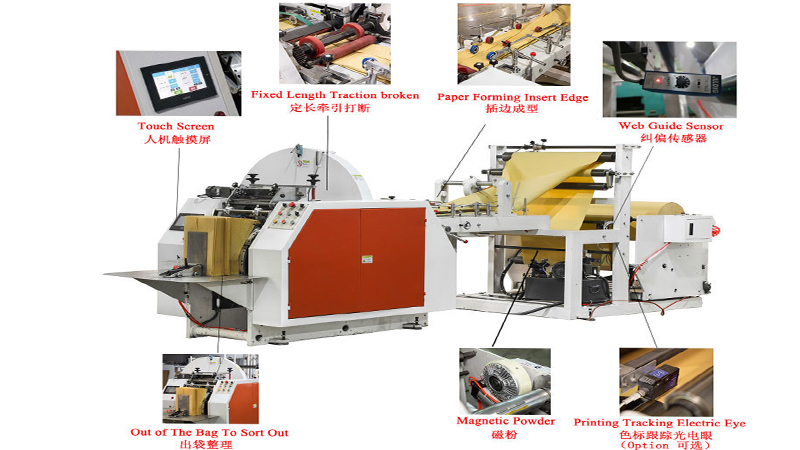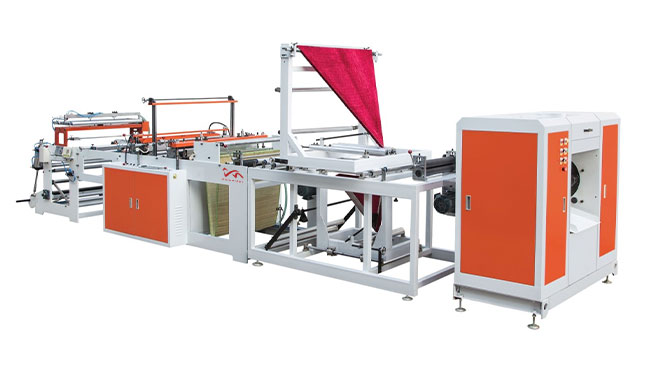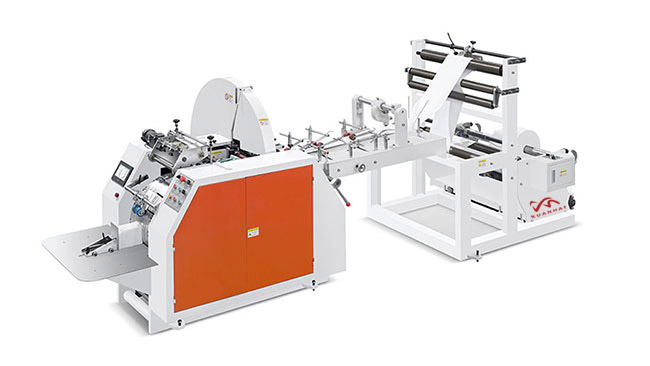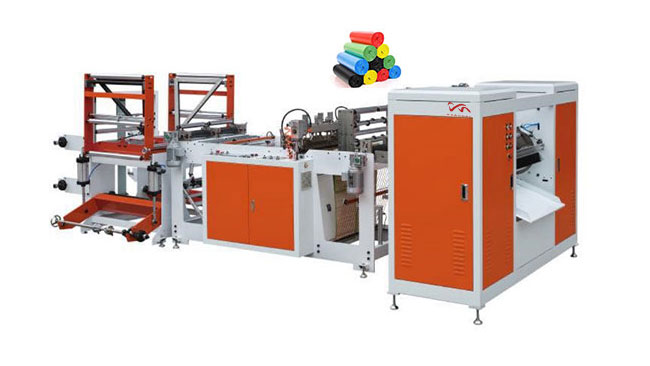The V-bottom paper bag, a staple in retail and grocery stores, is admired for its simple yet functional design. However, the machinery that produces these bags is a marvel of precision engineering. The "forming process" is where a flat roll of paper is transformed into a three-dimensional bag with a characteristic V-shaped gusset at the bottom. This stage is the heart of the V-bottom paper bag-making machine and presents several core technical challenges that manufacturers must overcome to achieve high-speed, consistent, and high-quality production.
1. Precision in Paper Feeding and Alignment
The process begins with feeding a large roll of paper into the machine. The first major challenge is ensuring absolute precision in this initial phase.
Challenge: Any slight misalignment or variation in the tension of the paper web can lead to a cascade of problems downstream. If the paper is not fed perfectly straight, the subsequent folds, creases, and glue applications will be off-center.
Consequence: This results in bags with skewed bodies, uneven V-bottom folds, and ultimately, a high rate of rejects. The bag may not open or stand properly.
Technical Solution: Modern machines employ sophisticated servo-driven feeding systems with automatic web guides and tension control mechanisms. These systems constantly monitor and micro-adjust the paper's position and tension, ensuring it enters the forming section with perfect alignment every time.
2. Accuracy of the V-Bottom Creasing and Folding
This is the most critical step that defines the bag. Creating the sharp, precise V-fold is a significant technical hurdle.
Challenge: The machine must create a perfectly symmetrical and sharp crease for the V-bottom. This involves precisely scoring the paper at specific angles and then folding it under high pressure. The paper's properties (like thickness, coating, and stiffness) can affect how cleanly it folds.
Consequence: An inaccurate crease will lead to a weak bottom seal. The bag might have a rounded or misshapen bottom, causing it to fail under load or simply not stand upright. A weak V-fold is the primary reason for bag failure.
Technical Solution:The design and maintenance of the creasing and folding blades and plates are paramount. They must be perfectly aligned and apply consistent pressure. Advanced **paper bag making machines** use hardened, precision-ground tools and often have adjustable mechanisms to accommodate different paper grades.
3. Glue Application and Seal Integrity
The structural integrity of the bag relies entirely on the glue seams. Applying the right amount of glue in the right place is a deceptively complex task.
Challenge: The glue must be applied in a consistent, thin bead along the side seam and, crucially, on the flaps of the V-bottom fold. Too little glue, and the seam will peel open. Too much glue can cause oozing, sticking the bag shut, or contaminating the machine's parts.
Consequence: Leaky seams or a bottom that bursts open are direct results of poor glue application. This not only produces a defective product but also leads to machine downtime for cleaning.
Technical Solution: High-precision nozzle applicators or wheel systems are used, often paired with vision systems to verify glue placement. The choice of adhesive is also critical—it must have the right tack, drying time, and strength for the specific paper being used.
4. Handling Material Variability
Paper is not a perfectly uniform material. Its behavior can change based on humidity, the grain direction, and the presence of recycled content or coatings.
Challenge: A V bottom paper bag machine must be robust enough to handle these natural variations without compromising bag quality. For instance, paper that is too dry may become brittle and crack during folding, while paper that is too moist may not hold a crease well.
Consequence: Inconsistent bag quality, increased breakage during production, and frequent machine adjustments that slow down the entire operation.
Technical Solution:The best machines are designed with a degree of flexibility. Operators can adjust folding pressure, creasing depth, and even the machine's speed. Some high-end systems feature environmental controls to condition the paper web, making its behavior more predictable.
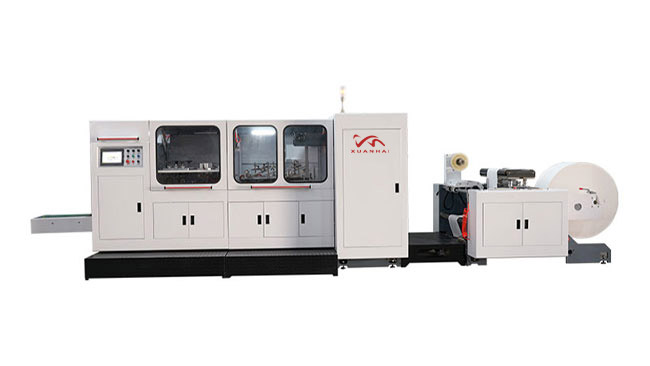
5. Synchronization at High Speeds
The ultimate goal of any production line is high output. A modern paper bag making machine can produce hundreds of bags per minute.
Challenge: At such high speeds, the synchronization of every component—feeding, creasing, folding, gluing, and cutting—becomes exponentially more difficult. A timing error of a fraction of a second can cause a paper jam, misformed bags, or even damage to the machine.
Consequence: Dramatic increases in waste and catastrophic machine stoppages. High-speed synchronization is the barrier between a mediocre machine and a high-performance one.
Technical Solution:This is achieved through advanced, integrated servo-motor technology. Instead of a single large motor driving everything through mechanical shafts and cams, modern machines use multiple independent servo motors. A central computer (PLC) controls them all with extreme precision, ensuring every movement is perfectly coordinated, even when ramping speed up or down.
Conclusion
The forming process of a V bottom paper bag making machine is a delicate dance of mechanics, material science, and electronic control. The core challenges revolve around achieving and maintaining precision in feeding, folding, and gluing while adapting to the inherent variability of paper and the demands of high-speed production. Overcoming these challenges is what separates a basic machine from a reliable, high-efficiency production asset that delivers strong, consistent, and market-ready paper bags.
- Paper Food Box Making Machine
- Three-dimensional carton forming machine
- Multi grid paper lunch box forming machine
- Hamburger box making machine
- Food box making machine
- Right angle paper box making machine
- Carton Erecting Machine
- Paper cup making machine
- Paper stick making machine
- Sticker Label Making Machine
- Sticker Label printing machine
- Die cutting machine
- Label Slitting and rewinding machine
- Label Making Auxiliary equipment
- Printing Quality Checking Machine
- Plastic Container Making Machine
- Plastic cup making machine
- Plastic cup printing machine
- Plastic lid printing machine
- PVC Shrink Sleeve Making Machine
- PVC Shrink sleeve gluing machine
- PVC Shrink sleeve cutting machine
- PVC film slitting machine
- PVC film printing machine
- Disposable Products Making Machine
- Plastic glove making machine
- Medical Disposable Making Machine
- Hotel Amenities Making Machine
- Paper confetti die cutting machine
- Party products making machine

